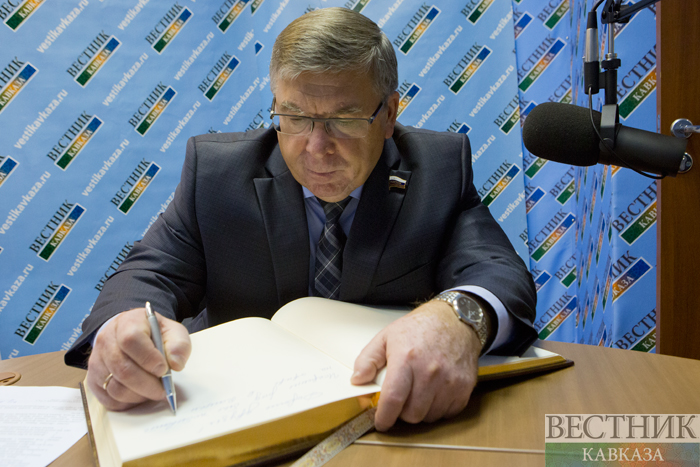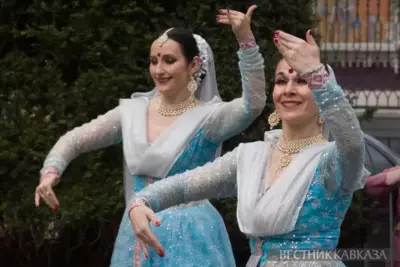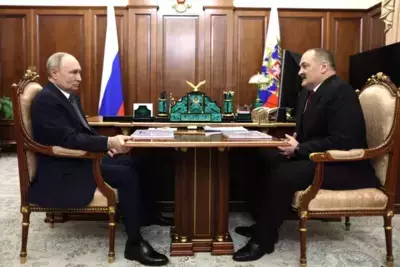Tribuna’s guest is the Chairman of the Federation Council Committee on Social Policy, the Senator from the Kursk Region, Valery Ryazanskiy.
See Part 1 Valery Ryazansky: Without our help, Crimea couldn't adapt to the new conditions
- Previously any company in our country had its own health spa, and this form of encouraging its employees was a great success. In addition to any corporate resorts and vacation spots, there were All-Russian ones, they were quite popular. What is about it today?
- I am going to tell you on my personal example, what a blunder the country's leadership and the government of Gaidar made at the time of privatization. Privatization took place on this principle: the whole social infrastructure companies should not have been included in the mass privatization. And these young reformers came from such a principle that the social sector must go to self-sufficiency, or go to the municipal government, and the company should not interfere with anything, the company should throw its economic weight around and make money, paid to shareholders dividends, buy what you want. This raw theory caused enormous damage, when health resorts, children's health facilities, were thrown out of balance. As a result, leading companies, including those of the defense industry, were deprived of power supplies.
I was the head of a large enterprise, we had 8000 workers, two kindergardens, a sanatorium near Moscow, and a dormitory. When the procedure of corporatization was ongoing, we agreed how to maintain this infrastructure. Then we had to transfer it all to the municipality, and it was not so easy to transfer, people got problems. People lived in a dormitory, which had to be divided into segments, into separate rooms, and to give people an opportunity to privatize this place. This right was established legally, but we did not give this opportunity. There were thousands of millions of human tragedies and problems due to these ill-conceived experiments over the country.
After some time they retreated, finally allowed to include the social segment in the privatized mass later. But the first stage did its job, and a large amount of corporate housing was left behind, as well as a huge number of dormitories.
There were many high-profile judicial scandals involving resettlement to dormitories and municipal houses. All of this involved human destinies. Enterprises hired workers on the so-called limit, these were bread factories, transport companies, the defense industry, it was the Likhachev Factory and AZLK. They had fully loaded dormitories, the fate of which was then in a deplorable state. They also got rid of kindergartens and all the rest.
We survived this period, thank God, we realized that a social package at an enterprise was a very good motivation for people to stay there, for people to work as long as possible, so that there are family dynasties, of which the President spoke in his recent address to the Federal Assembly. It's timeless a truth that does not even need to be proved. So it is good that the whole state machine has turned according to the position of the President.
- But going back to the health resorts topic, the existence of health resorts allowed people of the USSR to travel to other regions…
- It's too bad that we stopped thinking about the health resort industry as an integral part of healthcare, and in this sector we have lost many things. We talked about the replacement of privileges with cash payments; we gave each person with privileges an opportunity to receive money or to retain the natural privilege. A huge amount of unrealized privileges stuck in the state, almost 6 federal budgets. To drag this burden of responsibility was impossible. As a compromise, it was decided to let citizens choose themselves, whether it would be the money or natural privilege. And, unfortunately, the most of our citizens with privileges would choose money. And as a result, the mass of funds that were gathered on spa treatment, in the initial stage it amounted to 13-14 billion rubles annually, decreased significantly.
To date, our capabilities for health resorts treatment are about 3-4 billion rubles a year, but the number of people with privileges who have rights for them, including disabled people, remained the same.
The health resort industry needs to be fixed, we need to put it in one line with the important sectors, such as healthcare, social health insurance, make this component very important in terms of active longevity. An infection diagnosed in the early stages, the proposed treatment, health resort rehabilitation and prophylaxis return a healthy person to us. Then the government does not spend money to pay pensions to the disabled and receives back a normal working person who works, treats himself, and by his contributions still supports members of his family and, of course, generates retirement savings.

- A significant number of resorts are located in the North Caucasus. No one has invested in this region's tourism for a long time. How are things now?
- The region of the Caucasian Mineral Waters is being settled quite intensively. The Ministry of the North Caucasus was created. The Embassy which deals with these issues closely has also appeared, a sensible public policy in the development of the natural and climatic zone as a zone of resorts and a visiting area and the development of sporting activities have appeared. The separate Federal District has appeared.
Not so long ago I was at one of the workshops with [the presidential envoy in the NCFD] Sergey Melikov, he held a meeting on the fate of Kislovodsk Park.
The recent Days of Ingushetia in the Federation Council showed that Ingushetia started to create appropriate resorts. Similar projects are being developed in Dagestan and Kabarda. Not so long ago, in my opinion, in the autumn of last year Valentina Matviyenko and I headed a delegation, we went to Karachay-Cherkessia, checked out the development of the Arkhyz resort, and, in general, there was notable progress.
As for Caucasian Mineral Waters, I want to emphasize once again the importance of preserving this unique territorial entity as a single entity. They had a version of transfer of resorts to the regions. Each region could receive resort and load it, fill it with people, equip it, support and take care of it. But, for example, the scientists, doctors, environmentalists walked on foot through Caucasian Mineral Waters to understand where this or that mineral water originates, how human activities affect the source, if we construct a manufacturing plant instead of a sanatorium. And the scientists answered this question a long ago. We must cherish it as an apple of our eye, because any building, any pile, stabbed in the wrong place, can have a devastating effect on the balance that nature has created.
A lack of understanding of such importance, misunderstanding of these processes, and greed often veil eyes of officials, so we have to deal with the consequences of the decisions taken at the previous stages, especially decisions taken in the 1990s on the territories of the resort, including the Kislovodsk Natural Park.
- What is being done today to solve the problem of the Kislovodsk Park?
- The Park had been created by people. Bu illegally constructed buildings in this park were built due to someone's permission. The Ministry of the North Caucasus has drafted a federal law which helps to protect the area from possible harmful effects of decisions on their development.
The law should provide effective protection of the resort areas from human activity. A special working group, has been created. Important decisions on the territory of Kislovodsk Park, which covers 948 hectares, were adopted. On the basis of Kislovodsk Park a National Park is being created, it will have the highest status of protection, all cultural monuments on its territory will be protected by law.
We have financed the reconstruction of two facilities – the Museum of Air and the Cascading Stairs, which cost more than 50 million rubles. The Museum of Air costs about 15 million rubles. So we allocated a total of slightly more than 80 million rubles to repair these two facilities.
President issued a special order with instructions requiring the regional authorities and municipal authorities in the region, including the Federal Property Management Agency, to strictly fulfill the points of the order, which are signed by the President on the basis of the report of the Presidential Control Directorate. The fate of Kislovodsk Park is being discussed at a high state level.

- Valery Vladimirovich, in the context of the 'From Kamchatka Territory to the Kaliningrad Region' regular rubric of our program, we ask our guests about insights into the region they represent. You represent the Kursk Region in the Federation Council. Tell us what could we see in the Kursk Region?
- The main attraction of the Kursk Region and its neighbors – the Voronezh, Belgorod, Oryol, Bryansk, Lipetsk Regions, are probably the wonderful black earth fields. The Kursk Region and many regions today actually do not have vacant lots with quinoa and young birches. And those outrages which took place in the 90s and the early 2000s, thank God, they are gone. The land is being farmed and the most beautiful thing you can see there is certainly the golden fields with sunflowers, wheat and buckwheat. It really warms your soul.
Two federal drafts are being considered by the State Duma at the moment. They have been initiated by me and my colleagues. The first draft has been developed in cooperation with the Ministry of Culture, its Agency for Tourism, and are aimed at development of internal tourism. We try to show the economic bloc of the government that it is beneficial to support companies that send their employees to our domestic resorts in Russian tourist places. So that an employer would grant a part of his revenues (about 50 thousand rubles) to each family member to provide him or her with a vacation in a good resort. Therefore, people will have a great rest there and come back to the company to work there well.
The second draft is connected with a tax rebate of a similar sum, so that people who organize internal tourism in our country could use the benefit. There is a dispute. We hope for a positive decision by the government. There is a significant growth in internal tourism, including to my native region – the Kursk Region.
What are the sacred places in the Kursk Region that everybody should visit? First of all, there is Korennaya Pustyn. This is a place where the Kursk Korennaya icon ‘Boding of the Mother of God’ was found. The story took place 700 years ago. The place was reconstructed, the cathedral was reconstructed on the foundation of the previous cathedral which was blown up. This is a place of pilgrimage. A pilgrimage center was established there. The Korennaya fair traditionally takes place there annually. The tradition was restored 15 years ago. A fair in Russia is not only a trading market, but also a place for communication, where the interests of economics and the interests of culture meet. There used to be performances and cultural exchange. So we pay great attention to the fair today. I visit it every year and greet people on behalf of the Federation Council. Similar fairs take place in the Bryansk, Voronezh, and Lipetsk Regions. Today these traditions are common for us.
Another important place; it is important from the point of view of health resorts; it is the Maryino Resort. The Baryatinsky family was famous for building a country estate there. Both in Soviet times and today it has been used as a resort.
Speaking about other historically important places for us, they are connected with pilgrimage and religious routes. I mean Lgov, visiting the places where Sergey Radonezhsky lived, and places which are connected with the Battle of Kursk. This year we have built a new monument. We all know well about monuments in the southern part of the Kursk Bulge – the Belgorod Region, Prokhorovka Field, the famous Klykov’s bell-tower. However, there were a few monuments but not much information about the northern part of the Kursk Salient. Due to efforts by the governor of the Kursk Region, Alexander Mikhailov, he really did his best, a great job, we can only thank him and his team, the region managed to build a monument in the northern part, near the village of Ponyri. We restored the memorial to about 30 Heroes of the Soviet Union. The cruellest fighting took place in the northern part of the Kursk Bulge. And today sculptures of these heroes are situated in Ponyri. So one should go there and bow to the graves and the memory. There is a monument called the Great Oak, a place where the Nazis burnt people; it is similar to Khatsun in the Bryansk Region and Khatyn in Belarus. There were villages which were burnt by fascists together with their residents in the Kursk Region.
There are natural and climatic parks, almost 6 thousand ha were allocated for them. There are relict plants, the wonderful Seim River, the Tuskar River. There is a lot to see and bring souvenirs. The Kursk Region is nice, warm. I don’t know whether it is true or not, but they say that the Germans took black soil from our region to Germany to establish a fertile layer in Germany.
To be continued
















